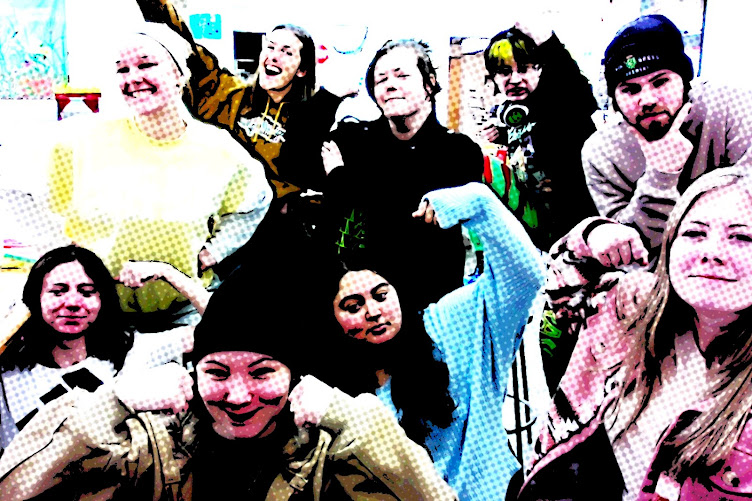Chapter 13: An Environmental
Art Project for Children with At-Risk Tendencies: The Eco-Wall of Hope
What was the chapter about?
In
this chapter, Michelle Creel provides us with an explanation and interpretation
of a project she chose to implement in her elementary school. At the time, Creel had taught at an Oakland
Terrace School in Panama City, Florida.
Oakland Terrace School consisted of nearly 440 students, 46% of which
comprised minority groups, mainly African American, Hispanic, and Asian
students (p.99). This particular school
had a 73% mobility rate and 85% free or reduced lunch (p.98). There was poverty, low self-esteem, and lack
of social skills and motivation. Given
those factors, students were at risk of dropping out if their needs were not
met. Creel realized that in her school,
‘life was about survival’ (p.98). Creel
then questioned how these students could be helped?
She
quickly realized that on some level we are all at-risk. We are all at-risk in the way that creatures
and habitats are endangered. Creel then
developed and ecological theme-based curriculum, which she had hoped would help
with the development of empathy among her students.
students arranging tiles Kyree, Alexis, and Jeffery on the wall
What was the project?
Creel
developed the project entitled the
Eco-Wall of Hope. This project would
help to ‘address the issue of endangered species and challenge students to work
on solutions to the problems that caused their endangerment’ (p.99). Throughout the project, students incorporated
research, science, literacy, social responsibility, writing, and art. The process consisted of students choosing an
endangered animal to research and they would then use that animal as the
subject of their ceramic tile. Students were
also required to complete a poem or prose to accompany their tile. Through the assistance of 10 high school
students, the elementary students were able to combine their tiles to create
the Eco-Wall of Hope. The final step was for the students to reflect
about their process and experience in their journals.
Article: The
Endangered Species Sculpture Garden: An Interdisciplinary Environmental Art
Education Curriculum for At-Risk Youth By: Michelle Creel
Alexis arranging tiles Eco-Wall
of Hope
What were the key concepts?
There
were five key concepts in this chapter, which consisted of:
·
Interdisciplinary
Environmental Art Curriculum: teaching a unit across several different
curricular disciplines while having it based around the idea of environmental
art
·
At-Risk
Children: students who are less likely to transition successfully into
adulthood and achieve economic self-sufficiency (wikipedia.org)
Article: “Defining
the Term ‘At Risk’”
·
Empathetic Development: the process of developing empathy
·
Endangered Species: species of animals or plants that are at risk of
extinction
What are your thoughts?
1)
This project was based on the idea that
‘learning about issues that confront the environment and threaten its
very existence may lead to personal understanding, empathy, and action’ (p.98). What are ideas or activities that you have
for incorporating empathetic development in your classroom?
2)
What are ways you can think of in which you can foster the needs of at-risk
students in your future school building?
3)
What are at least 3 essential questions you would have asked students during
the project of the Eco-Wall of hope?
The Activity:
Students were
asked to look at art that was created by artists who engage environmental
themes. These artists and their artwork
consisted of:
·
Nancy
Holt’s Sun Tunnels
·
Andy
Goldsworthy’s Soul of a Tree
·
Mel Chin’s Passenger Pigeon
·
Joseph
Beuys’ Coyote: I Like America and America
Likes Me
Creel then used
Anderson’s (2000) art criticism methodology to initiate a discussion among the
students.
Anderson’s art
criticism methodology is based around using ethnographic research. Ethnography, the research method that centers anthropology, is
becoming increasingly popular in art education. Ethnography consists of
engaging in fieldwork, closely observing and recording behaviors and ways of
being of a group of people, then writing an interpretive account that
emphasizes descriptive detail (Marcus & Fischer, 1986).
The first stage
consists of immersion and response.
Ethnographic
criticism is a type of fieldwork that requires the researcher to immerse him/herself
in the situation to be researched. It
should be approached with an empathetic attitude (Lankford, 1984).
The second stage,
description, moves from surface (that which can be seen) to depth (that which
is implied or indicated by the forms observed). The depth phase of description
also includes the use of contextual and historical material as it is fitting.
The Final Stage is
interpretation. The longer the
descriptive, analytic, discriminatory process goes on, the more strongly the
researcher turns to connection making, trying to construct an interpretation, a
narrative, a story, a framework that will make sense of what is found.
I would like you
to choose one of the following artists and their artwork:
·
Nancy
Holt’s Sun Tunnels
·
Andy
Goldsworthy’s Soul of a Tree
·
Joseph
Beuys’ Coyote: I Like America and America
Likes Me
·
Sue Coe’s Meat and Pork for Your Fork (1987)
·
Alexis Rockman’s
Bronx Zoo
·
Chris
Jordan’s Midway
After choosing a
piece to examine, I would like you to express your impression and thoughts
about the piece, much like the students did in their project. Then explain how you feel that Anderson’s
criticism methodology would be beneficial to use in the classroom and why Creel
may have used it during this project.
Please provide an image of the piece that you choose to discuss.
(Using Art
Criticism Strategies in Ethnographic Research, Author: Tom Anderson, http://www.jstor.org.proxy.lib.uni.edu/stable/pdf/20716012.pdf?acceptTC=true)
Sources:



No comments:
Post a Comment